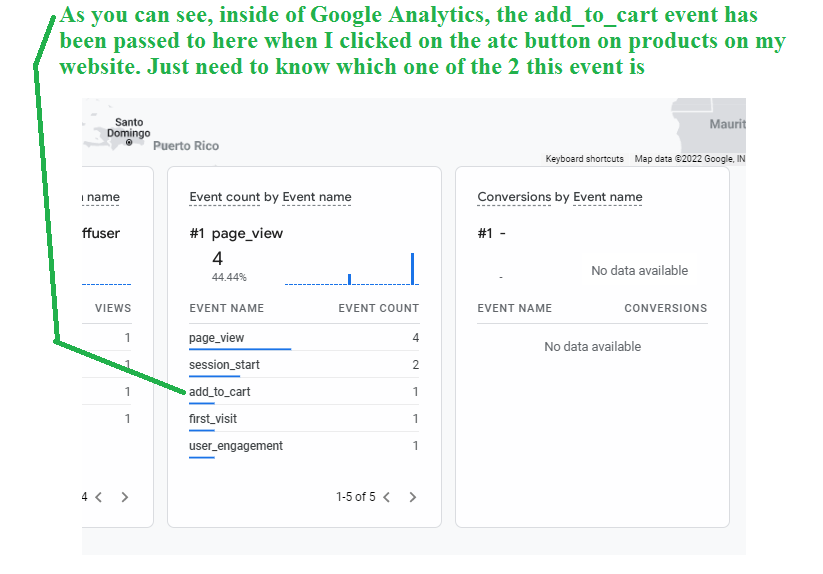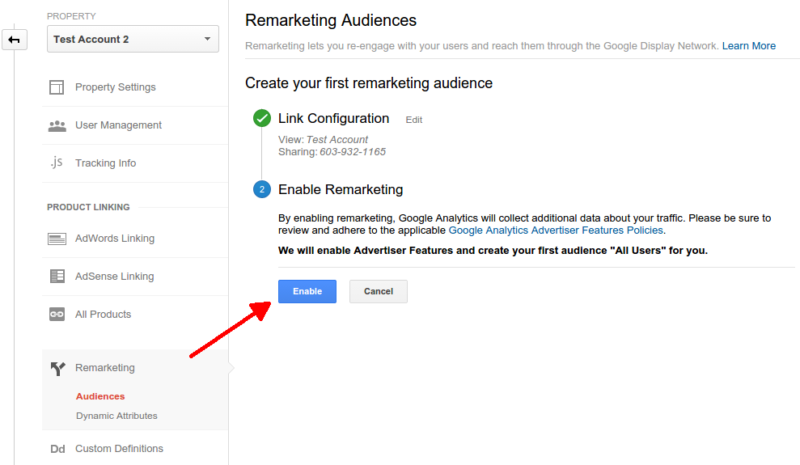Optimize Your ROI With Remarketing in Google Analytics
In the world of digital marketing, the utilization of remarketing techniques within Google Analytics has shown to be a powerful tool for boosting roi. By harnessing the power of customer information and customizing ads to particular target market sectors, businesses can considerably amplify their conversion rates. Nonetheless, the actual crucial lies in the art of accuracy - understanding individual actions, crafting compelling ads, and continually refining approaches to drive ideal results. The trip to making best use of ROI with remarketing is a nuanced path led with insights and opportunities that can improve the trajectory of your advertising ventures.
Comprehending Remarketing in Google Analytics
Comprehending remarketing in Google Analytics is essential for maximizing your electronic advertising strategy. Remarketing enables you to target individuals that have actually formerly seen your internet site or engaged with your application, providing them with tailored advertisements as they surf other websites or utilize other apps within the Google Show Network. This technique assists keep your brand name top of mind and urges users to return to your website, inevitably raising the probability of conversion.
By using Google Analytics, you can track the efficiency of your remarketing projects, getting important insights right into user habits, interaction, and conversions. This data allows you to fine-tune your bidding, targeting, and messaging methods to enhance the overall efficiency of your projects.
In addition, recognizing the various kinds of remarketing listings offered in Google Analytics, such as conventional, dynamic, and comparable target markets, enables you to create highly fractional and tailored projects tailored to details user sections. This degree of granularity can substantially enhance the significance and impact of your remarketing initiatives, inevitably optimizing your roi.
Setting Up Remarketing Checklists
To successfully carry out remarketing campaigns in Google Analytics, the initial action includes creating and setting up remarketing checklists targeting certain individual sectors based upon their interactions with your website or application. By setting up remarketing lists, you can customize your marketing initiatives to reach users that have currently shown passion in your services or products.
To start, browse to the Admin area of your Google Analytics account and choose the Home where you intend to create the remarketing list. Then, under the Building column, click 'Target market Definitions' and select 'Audiences.' Next, click the red 'New Audience' switch and select 'Produce New' to specify the criteria for your remarketing list.

Crafting Efficient Remarketing Advertisements

When crafting your advertisements, concentrate on producing attention-grabbing headings and engaging visuals that stand apart to prospective clients. Incorporate strong calls-to-action that urge individuals to revisit your site and finish a wanted activity. Use dynamic remarketing to reveal individualized ads featuring service or products that customers have formerly checked out on your site.
Furthermore, make sure that your ads are mobile-friendly considering that a significant part of internet traffic comes from smart phones. Examination various ad variants to determine which messages and styles drive the best outcomes. By constantly refining and optimizing your remarketing advertisements based upon performance data, you can optimize their effectiveness and improve your return on financial investment.
Studying Remarketing Performance

Via Google Analytics, marketing professionals can track the performance of their remarketing campaigns in real-time, enabling them to identify fads, patterns, and areas for renovation immediately. By analyzing the information, online marketers can determine which advertisements are carrying out well, which target market sections are reacting positively, and which networks are driving one of the most conversions. This level of granularity allows marketers to make data-driven decisions to maximize their remarketing projects for far Extra resources better results.
Maximizing ROI With Remarketing
Evaluating remarketing data in Google Analytics makes it possible for online marketers to determine possibilities for enhancing roi (ROI) via critical changes - What Is “Remarketing” In Google Analytics?. To make best use of ROI with remarketing, it is crucial to comprehend the behavior of your audience. By analyzing individual interactions, such as the pages they went directory to, the items they saw, or the actions they took on your site, you can tailor your remarketing campaigns better
Segmenting your audience based on their habits permits you to develop customized and targeted ads that are more probable to reverberate with them. By showing relevant ads to details sectors of your audience, you can enhance the possibilities of conversion and eventually enhance your ROI.
Moreover, checking different ad creatives, messaging, and offers can help identify what resonates ideal with your target market. A/B testing permits you to trying out different elements of your advertisements to determine what drives the highest involvement and conversion rates.
Conclusion
In verdict, making best use of ROI with remarketing in Google Analytics needs a critical technique to evaluating customer habits, segmenting audiences, developing tailored ads, and optimizing project performance. By leveraging data-driven insights and examining various methods, companies can enhance their remarketing efforts to drive greater engagement and conversion prices. This methodical approach makes certain that sources are effectively assigned in the direction of optimizing rois in remarketing projects.
Next, click on the red 'New Target market' button and select 'Develop New' to define the specifications for your remarketing checklist.
By continuously refining and maximizing your remarketing ads based on performance information, you can maximize their efficiency and boost your return on investment.
By delving into these insights, online marketers can gain a comprehensive understanding of exactly how their remarketing initiatives are reverberating with their target audience and driving conversions. To make best use of check it out ROI with remarketing, it is vital to comprehend the behavior of your target market.In conclusion, making best use of ROI with remarketing in Google Analytics requires a calculated strategy to evaluating customer habits, segmenting target markets, developing tailored ads, and optimizing project efficiency.